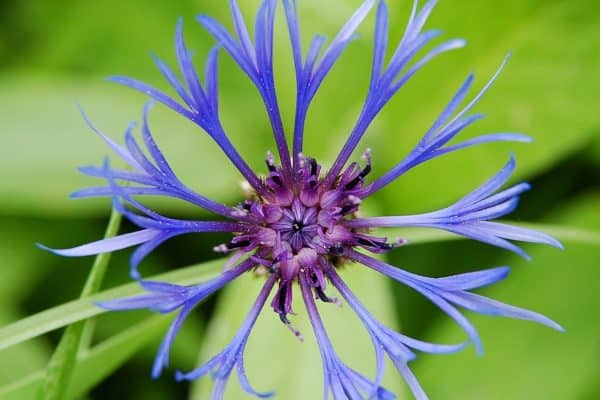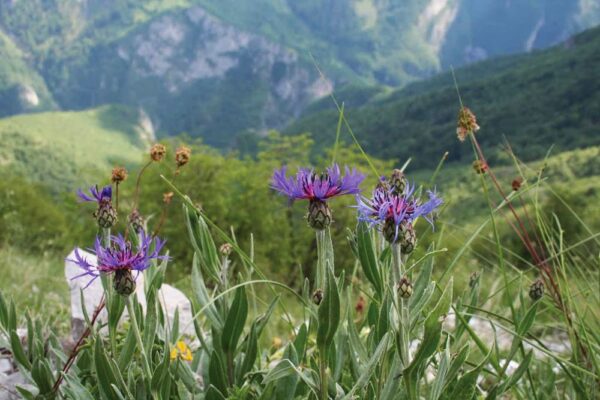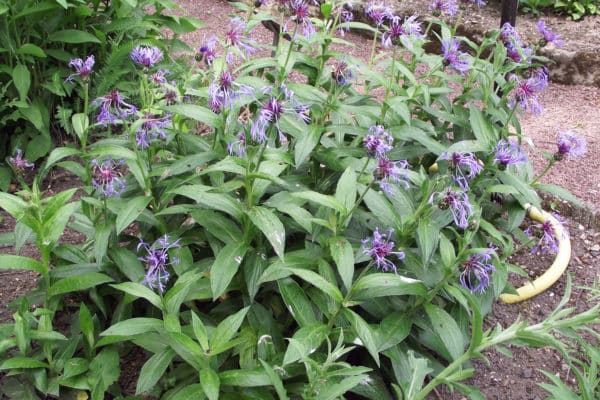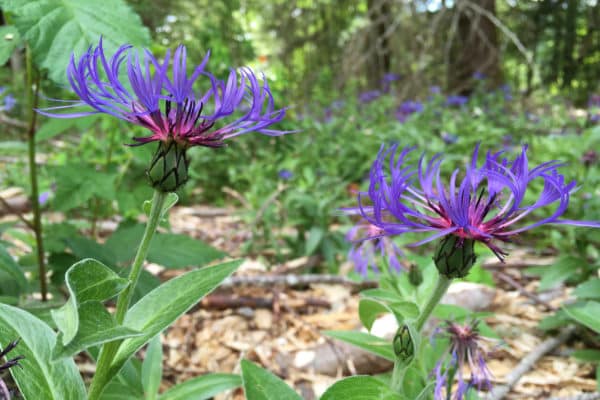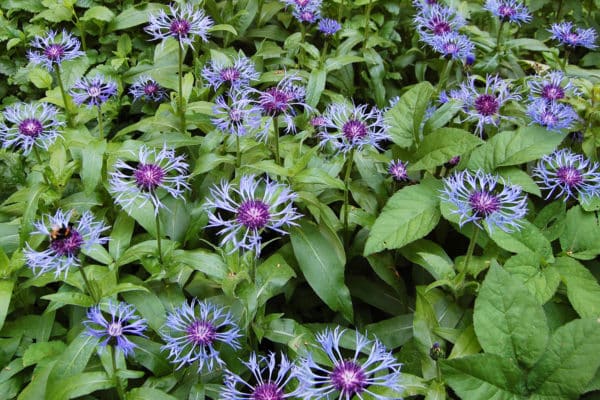Mountain bluet
About This Species
Mountain bluet (Perennial cornflower, Montane knapweed) is a popular garden perennial introduced from Europe; however, it easily escapes gardens and invades natural areas. This plant can self-seed, which makes it difficult to control. It also spreads through roots. Mountain bluet is found in meadows, pastures, roadsides and disturbed open areas. Mountain bluet is designated as a Management species by the BC Provincial Priority Invasive Species List.
How to Identify
Mountain bluet ranges from 30-80 cm in height. Fine hairs cover the stem.
Flowers are large, bright blue with a ray-like appearance and black fringe at the base and look a lot like knapweed flowers.
Leaves are 10-30 cm long, lance shaped, with a woolly underside.
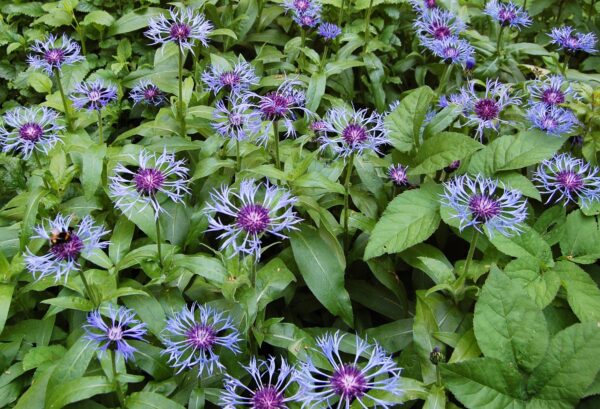
Take Action
Prior to seed production, pulling, cutting, or mowing can be effective. If flowers are present, be sure to properly dispose of plants to ensure no more seeds are dispersed. Try to remove as much of the root as possible to discourage regrowth.
-
If you need advice about invasive species on your property or you are concerned about reported invasives in your local area, contact your local government or regional invasive species organization.

Plantwise
Learn about best practices
A few non-invasive alternatives to plant instead of Mountain bluet include:
- Bluehead gilia (Gilia capitata)
- Clustered bellflower (Campanula glomerata)
- Nodding onion (Allium cernuum)
- Sea lavender (Limonium latifolium)
- Wild bergamot (Monarda fistulosa)
REPORT TO PROTECT BC’S BIODIVERSITY

Use the app
Observe and report to protect BC’s biodiversity

Report through this website
Use our form to tell us what you’re seeing and where.



